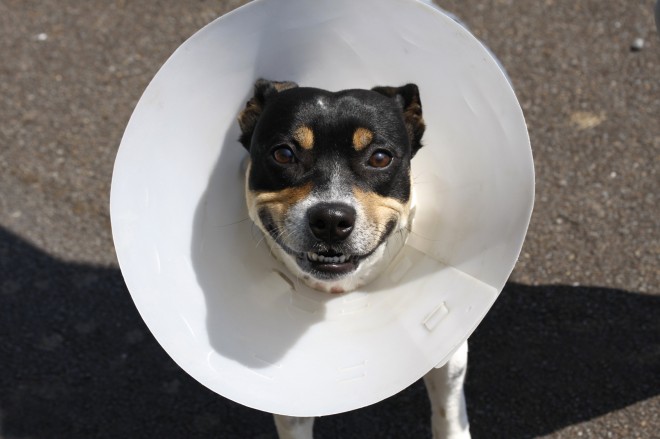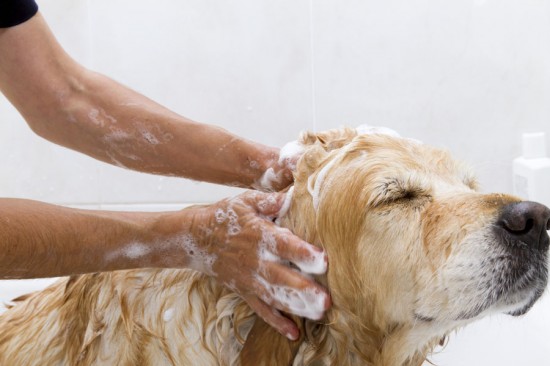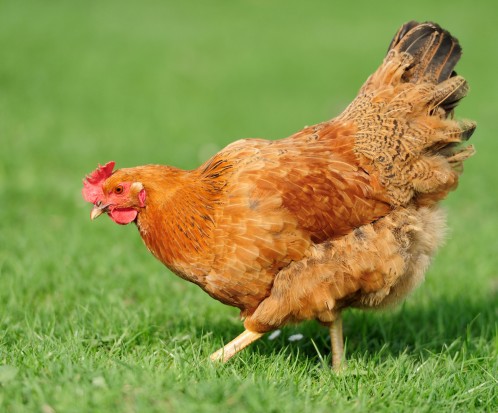

If your vet has used stitches, staples or another form of closing a laceration or wound on your dog, it is vitally important to ensure that they fulfil their purpose and are left alone to heal normally, without any interference from your dog! Generally, your vet will arrange an appointment with you a few days after your dog has been stitched up, to check that the wound looks good and that there are no signs of a building infection. You will also possibly need to return to the vet for a second time, in order for the stitches to be removed when they have done their job.
In between your visits to the vet to check that the wound is healing properly and monitor when it is time for the stitches to come out (if needed) it is up to you as the dog owner to keep an eye on the stiches, ensure that they are healing properly, and keep your dog from picking at them or irritating them! In this article, we will look at the key aspects of aftercare for stitching in the dog, and how to monitor the wound at home.
Many people still believe that licking helps to promote healing, and that dogs should be permitted to lick their wounds. However, this is not the case, and the mouth of the dog is a dirty place, filled with bacteria that can enter and cause an infection in the wound. This means that you may need to use a buster collar on your dog to stop them from licking or biting their stitches, something that can be challenging in and of itself.
Licking can introduce bacteria into the wound and delay or prevent healing, but another problem is that after a couple of days of healing, the wound is likely to begin to feel itchy as it heals, and pose an irresistible urge to your dog to scratch the wound. Depending on the location of the stiches, the buster collar may be able to prevent this, otherwise bandaging or otherwise covering the wound, as well as supervision, may be required.
Scratching the wound runs the risk of ripping open the stitches, introducing bacteria from the paws and claws, and generally mucking up the natural healing of the incision.
Stitches and staples are strong and designed to be somewhat flexible, and some dogs recover very quickly after treatment and act as if nothing is amiss! But it is important to remember that your dog has a wound that is healing, and as such, you must take care to limit activities and vigorous exercise that can place pressure on the stitches or risk damaging them.
Keep exercise relaxed and low-key, try to avoid other dogs, and don’t allow your dog to jump about, go haring around, or otherwise take part in high impact activities that may affect healing.
Your vet should give you advice on what to expect as the wound heals, as the skin and surrounding tissue goes through changes as part of normal healing. The edges of the incision should be touching, and clean, and may appear redder than the surrounding skin, as part of normal healing. Some bruising may be present too, but after a few days, the redness and any bruising should go down on their own. A clear or light pink or yellow discharge may be present within the first few days of healing, and this is fine providing that the discharge is pale in colour, not prolific, and does not smell foul.
It is important to keep an eye on the wound and check it at least twice a day to make sure that it is healing normally and not becoming infected. Infections are a reasonably common complication of some injuries, such as those gained through a dog bite, and so it is important to be vigilant and call your vet if you have any concerns. You should also check that the stitches or staples are in place and holding the wound closed, and have not separated themselves from the friable edges of the skin.
Keep the wound clean and dry and monitor it for the following potential indications of problems:
 How To Groom And Bath Your Dog - The Basics
How To Groom And
How To Groom And Bath Your Dog - The Basics
How To Groom And
 What Pet Owners Should Know About Leukemia In Cats
Leukemia in cats is a medical condition tha
What Pet Owners Should Know About Leukemia In Cats
Leukemia in cats is a medical condition tha
 What Is Vaccine Associated Adverse Event In Cats And Dogs?
What Is Vaccine A
What Is Vaccine Associated Adverse Event In Cats And Dogs?
What Is Vaccine A
 Healthy Skin And Feathers In Chickens
Healthy Skin And
Healthy Skin And Feathers In Chickens
Healthy Skin And
 Five Suggested Dog Breeds For Older People
Five Suggested Do
Five Suggested Dog Breeds For Older People
Five Suggested Do
Copyright © 2005-2016 Pet Information All Rights Reserved
Contact us: www162date@outlook.com